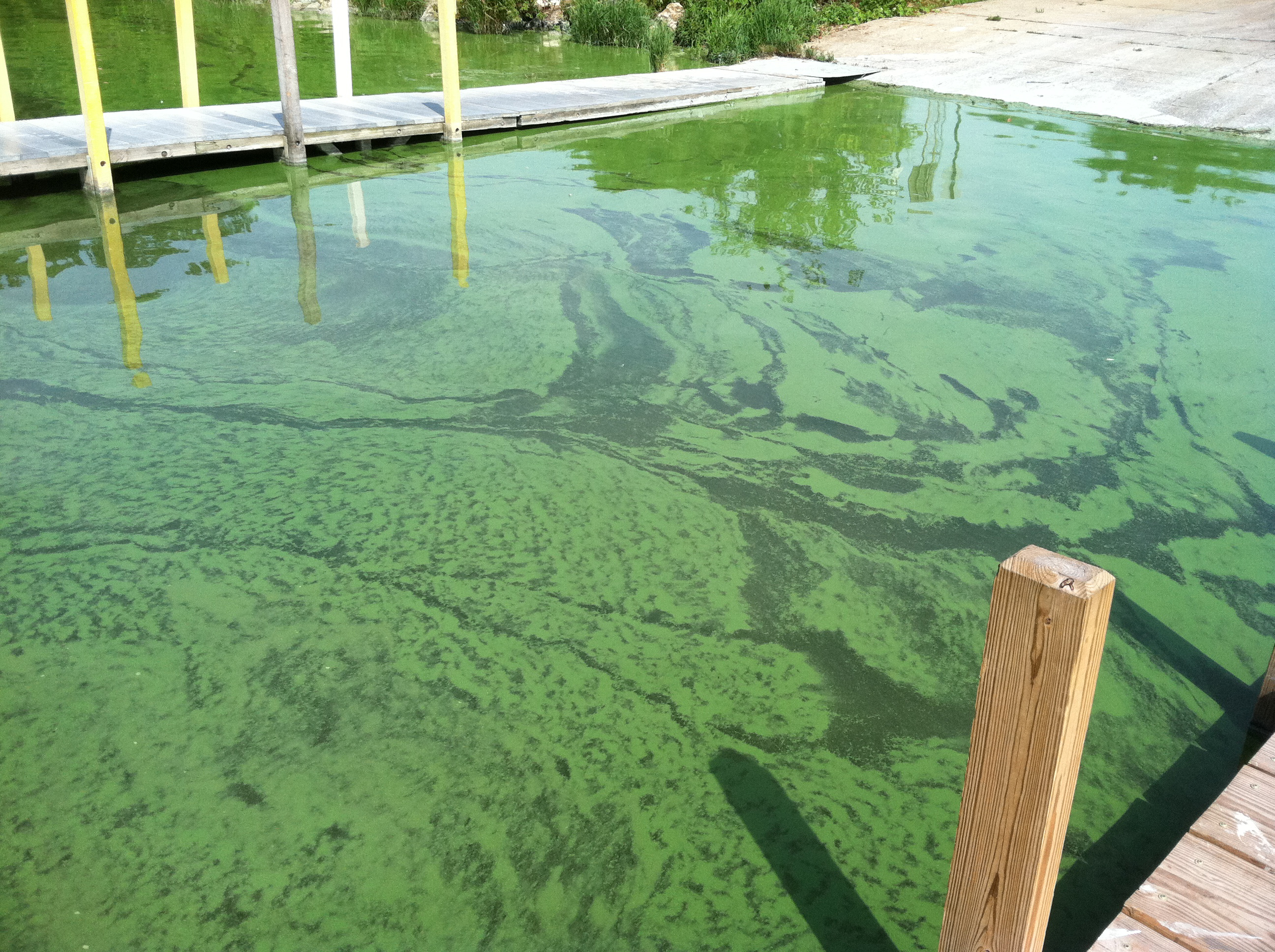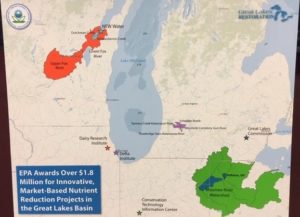
TRAVERSE CITY, Mich. (AP) — Federal grants totaling more than $1.8 million are being awarded to five organizations for projects that will use market-based approaches to reducing nutrient pollution that helps cause harmful algae blooms in the Great Lakes, officials said Monday.
The funding will come through the Great Lakes Restoration Initiative, a program that deals with some of the region’s most persistent ecological threats, the Environmental Protection Agency said.
“Addressing emerging challenges, like excess nutrients in our waters, requires creative solutions,” Administrator Andrew Wheeler said in a statement. “This EPA funding will help build on existing state, local and tribal efforts and support innovative tools and technologies that will deliver critical water quality improvements at a lower cost.”
Scientists say excessive runoff of nutrients, primarily phosphorus, feeds algae blooms that degrade water quality and in some cases produce toxins. Gigantic masses form each summer on Lake Erie’s western basin. They also have shown up in Lake Huron’s Saginaw Bay.

Three areas designated by USEPA to receive funding for water quality trading, Photo by USEPA via Gary Wilson
Michigan, Ohio and the Canadian province of Ontario have pledged to seek a 40 percent reduction of phosphorus runoff into western Lake Erie by 2025. The primary sources are fertilizers and manure from farms and sewage treatment plants. Septic tanks and runoff from urban streets and yards also contribute.
The newly awarded grants are the first since the restoration initiative got underway in 2010 that resulted from competitive applications for water quality trading projects, EPA said. Such projects enable businesses or facilities to cut costs of reducing contamination by purchasing credits from others that have done more than required to curtail pollution.
Farmers can earn credits through best management practices such as planting off-season cover crops that keep soil and fertilizers on fields instead of washing into waterways, said Bill Schleizer, CEO of the Chicago-based Delta Institute, one of the grant recipients. Its project will seek to reduce pollution in Michigan’s Kalamazoo River watershed.
“These innovative projects will encourage cost-effective ways to reduce the excess nutrients that can lead to algal blooms and other water-quality issues,” said regional administrator Kurt Thiede said.
The Delta Institute was awarded a $303,181 grant. Other recipients include the Conservation Technology Information Center in West Lafayette, Indiana ($479,782); NEW Water in Green Bay, Wisconsin ($338,438); the Great Lakes Commission, based in Ann Arbor, Michigan ($290,000); and the Dairy Research Institute in Rosemont, Illinois ($437,000).
Catch up on more Great Lakes Now algal bloom coverage:
Water sensors, data collaboration make Great Lakes smarter
Lake Erie Algae: 2019 was bad but could have been worse
Great Lakes Moment: Harmful algal blooms negatively impact the Lake Erie economy
Featured image: Harmful algae bloom. Bolles Harbor, Monroe, MI, Lake Erie., Photo by NOAA via wikimedia cc 2.0




